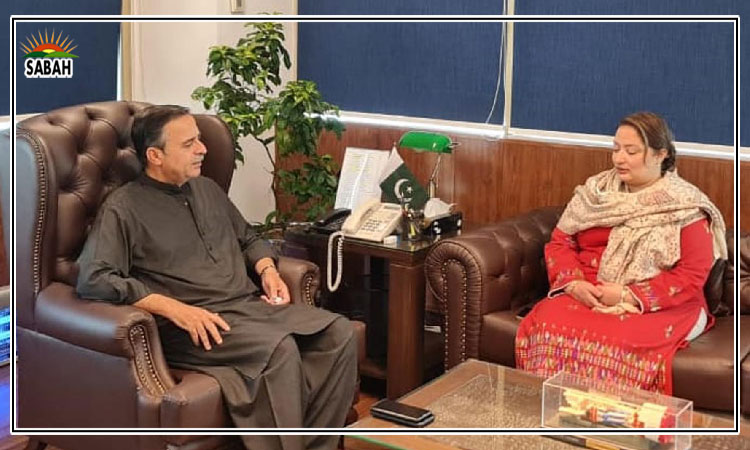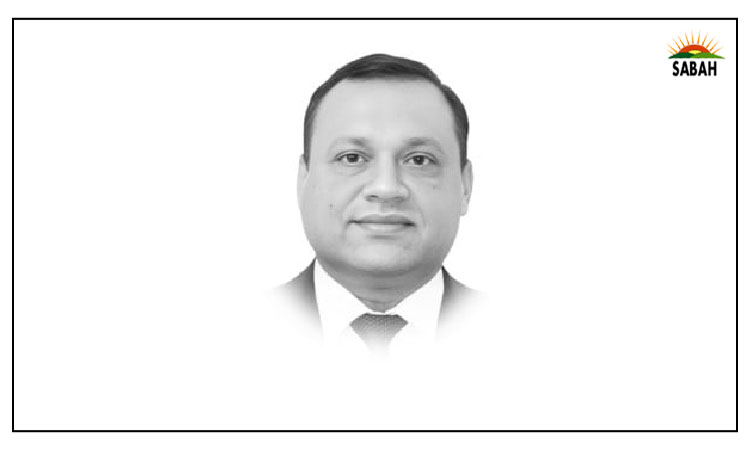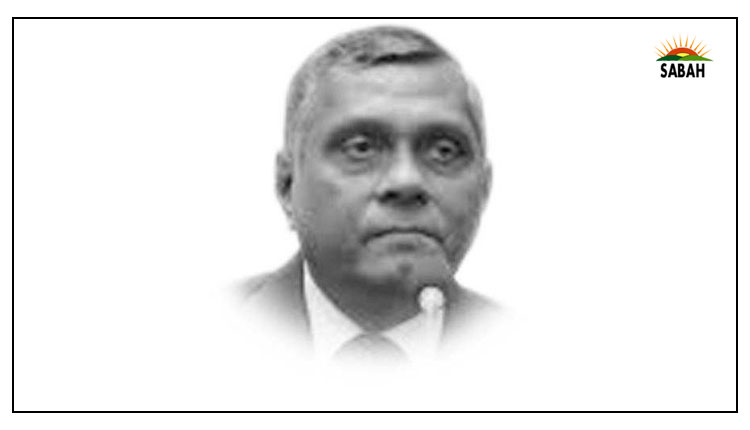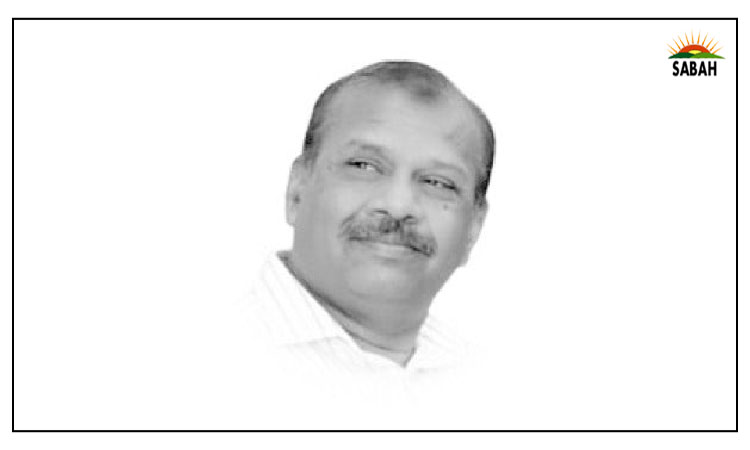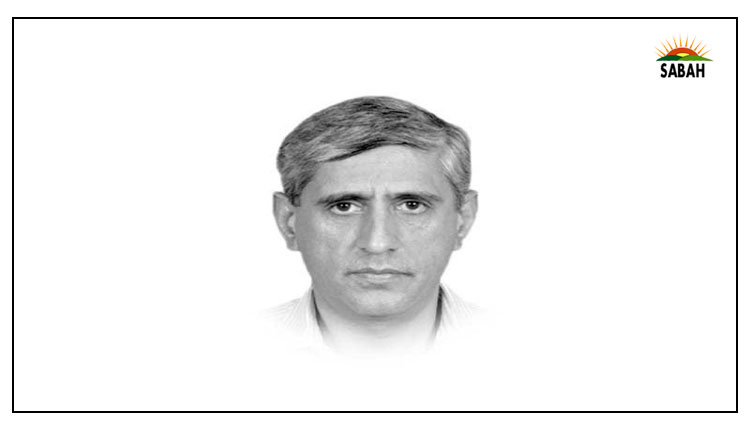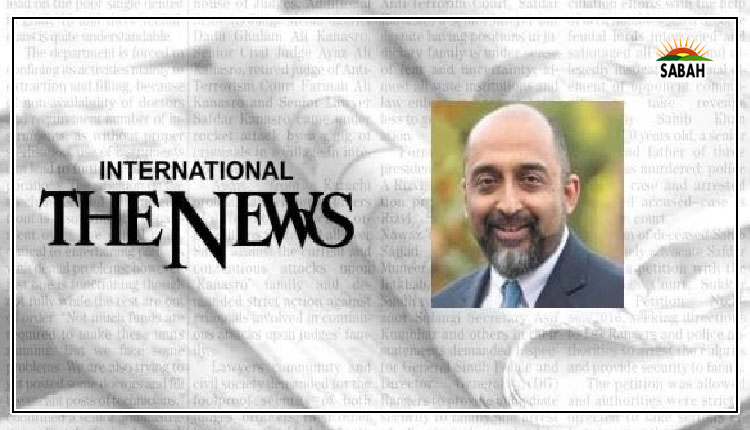China, the neighbour: ‘In a way’…Mosharraf Zaidi
What did Foreign Minister Ishaq Dar mean when, during a press conference in London, he clearly listed Pakistans immediate neighbouring countries as Afghanistan, Iran and India, but then said that China was a neighbour in a way?
The explanation he would likely provide is that one is reading too much into the flubbing of a simple description of Pakistans sovereign territory that he spoke in the flow and that he is a responsible and senior leader and doesnt need naysayers nit-picking his every word as the foreign minister.
All of this may be true. He may have distinguished China being a neighbour in a way that is different from Afghanistan, Iran and India just as one may cough or clear ones throat, or touch ones beard, during the utterance of an important sentence, with no deeper meaning or intent.
The timing and the specific implications of this distinction however are not so easy to ignore. I will explain why the implications matter, but to do so, we need to step back and understand how India conducts its relationship with Pakistan.
Since before taking office as Indias prime minister, Narendra Modi has been slicing and dicing clumsy foreigners desperate for a piece of the India action. His approach to Indias standing in the world is concerted, highly disciplined, consistent, purpose-driven and visionary.
Prime Minister Modi knew who his key people and key ministers would be, years before he had an opportunity to assign them their roles. He stands alone today among living Indian leaders, and in part this is because he does not act alone or in isolation. He is part of a mission-driven organization (the RSS) that has exercised Karmic discipline in its quest to cleanse India and restore it to the RSSs conception of the greatness and goodness of a Hindu Rashtra. This mission enjoys the support of nearly every segment of society because the mission has been engineered to cater to those segments.
PM Modis approach to Indias standing in the world includes within it a wholesale transformation in the Pakistan-India relationship. The driver for this is not merely the RSS-driven ideological superiority that India asserts in nearly every public (and mostly oblique) reference to Pakistan. It is also part of a larger picture that Indian diplomats and leaders have been painting about India.
Modis wider Pakistan logic is quite simple. Pakistan is too small for India to be seen as paying it any more attention than any other relatively minor relationship. In this way, Modi is the leader many Indian strategists (including those of a secular persuasion) in South Block have been waiting for their entire lives. Combined, Indias thought leaders and diplomats have convinced themselves and most of the rest of the world that India is too big to be hyphenated with Pakistan. They feel that if third parties (be they countries, or multilateral organizations, or the wider international media) continue to see India through the lens of its difficult relationship with Pakistan they will continue to see a side of India that they dont want anyone (including Pakistanis) to see.
All this has converged nicely with an incredible run of pure GDP growth that has elevated millions out of stark poverty and into lives of hopefulness and optimism about their economic future. In the decade since PM Modi became prime minister, India has graduated from being a middle power that just couldnt ever get it right to being a global power that can do no wrong. It has gone from being an uncertain nagging neighbour to Pakistan (and to Bangladesh, Sri Lanka and Nepal) to being an assertive and confident presence in the Quad with Japan, Australia and the United States, and an aggressive (even if for show) adversary to China. In short, India has put on its big-boy pants, and it doesnt want to splash around in the kiddie pool anymore.
Now to understand how this transformation was executed with respect to Pakistan, it is important to remember the enduring facet of PM Modis leadership of India on the international stage: patient, well-prepared and mission-driven. PM Modi began engagement with Pakistan before he became PM. The year was 2013, Manmohan Singh was still prime minister of India, and the US had yet to undo the sanctions imposed on then chief minister Modi for his presiding role in the massacre of Muslims in Gujarat.
In the summer of 2013, newly elected to office, then-PM Nawaz Sharif continued a steady stream of public overtures for normalization. Back then, PM Sharif had not yet been ambushed by his subordinates through their sponsorship of the 2014 dharna. Not knowing how things would go in the Indian election anticipated for 2014, then-PM Sharif tasked his cabinet to move quickly to establish a template for cross-border trade. The business case for opening up trade had been prepared by academics and scholars and had enjoyed broad political support across all parties even the still patriotic PTI. Big businesses in Lahore, Sialkot, Faisalabad and Karachi could all see the obvious convergences that would enable access to Indias exciting consumer market for their products.
Real-estate mafiosos could see Sikh families investing in hotel, retail and residential properties to enable and deepen the possibilities of spending more time near Nankana Sahib and Hassanabdal. Many of these commercial opportunities predated the 2013 government and several had been worked on intensively during the Musharraf regime.
By December 2013, in keeping with his track record of doing things fast, Nawaz Sharif had moved beyond rhetoric and had sent then-chief-minister Punjab Shehbaz Sharif to meet with Manmohan Singhs commerce minister, Anand Sharma. Indias highly skilled hawks in South Block, fearing the speed at which Nawaz Sharif wanted to go, objected to dialogue between Anand Sharma (equivalent of a full federal minister) with Pakistans then-state minister for commerce, Khurram Dastgir, because of Indian delegation protocols.
As a result, on January 16, 2014, a day before scheduled talks between the commerce ministries, Dastgir Khan was elevated to full federal minister. A trade deal that included MFN reciprocity was agreed upon at those talks (in continuance of the work that had been done by former foreign minister Hina Rabbani Khar with her then counterpart SM Krishna in 2012). Excitement was high on both sides of the Radcliffe Line.
An India Show trade exhibition was organized jointly by the FICCI (Federation of Indian Chambers of Commerce and Industry) and the Lahore Chamber of Commerce and Industry and scheduled, unironically, on February 14, 2014. Alas, Valentines Day never came. The show was cancelled hours before it was to begin. The rapid pace of talks between Sharma and Dastgir ground to a halt and suddenly all momentum dissipated into the thick, smog of East and West Punjab.
Legend has it that seeing the rapid pace of the commerce minister talks in January 2014, Narendra Modi assigned a key confidante to reach out to Nawaz Sharif and ask him to slow down the pace so that this trade deal could be engineered anew by a strong government with a fresh mandate than by the lame duck government of Manmohan Singh.
A lot has happened since then, but this history is instructive because it is the tone that it set that continued to inform how India under Modi seeks to conduct relations with Pakistan. India will set the terms (do this, say this, dont do this, dont say this) and Pakistan (a struggling middle power) will be afforded dialogue with India (an unstoppable global power).
Before Modis election, Nawaz Sharif was asked to delay his own commerce ministers deal. At Modis inauguration in 2014 Nawaz Sharif was asked not to meet with the Hurriyet. At Ufa in 2015, Nawaz Sharif was asked to exclude Kashmir from the Pakistan-India joint statement. There is a pattern here and it doesnt take rocket science to figure out what it is. Pakistans agreeability was robust and innovative then. The world has changed. It would be lazy and dangerous today.
One way to try to understand what Ishaq Dar meant when he distinguished Pakistans shared borders with China, from the other three immediate neighbours is to remember that India under Modi has gone from testing the nerve of Pakistani elites to outright running over it.
Could the long-standing backchannel have asked Nawaz Sharif to indicate Pakistans willingness to demonstrate openness to accommodating Indias insistence on equating Azad Jammu and Kashmir (and more crucially Gilgit-Baltistan) with Indian Illegally Occupied Kashmir? Hence the in a way border with China?
Could Ishaq Dars little fumble in London be a deliberate effort to signal Pakistans seriousness in continuing to seek dialogue with India?
Recent history, both from Nawaz Sharif circa 2014 to 2017 and Qamar Javed Bajwa circa 2019 to 2022. would indicate no hesitation among the Pakistani elite to engage in such dangerous and foolhardy diplomacy. Of course, it could just have been nothing.
Courtesy The News


